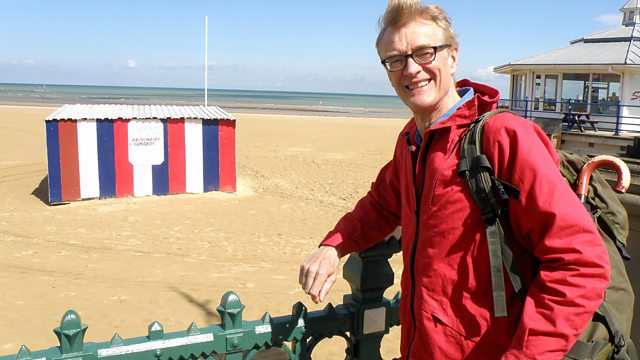St Kilda Archaeology Coast

Similar Content
Browse content similar to St Kilda Archaeology. Check below for episodes and series from the same categories and more!
Transcript
| Line | From | To | |
|---|---|---|---|
40 miles out into the Atlantic Ocean | 0:00:30 | 0:00:32 | |
lies a group of islands which have an almost mythical status. | 0:00:32 | 0:00:36 | |
St Kilda. | 0:00:36 | 0:00:38 | |
It's a place of superlatives. | 0:00:43 | 0:00:45 | |
The biggest sea cliffs in Britain, | 0:00:45 | 0:00:48 | |
the largest sea bird colonies | 0:00:48 | 0:00:51 | |
and the remotest village street. | 0:00:51 | 0:00:54 | |
Regular lines of stone walls and houses are still standing, | 0:00:57 | 0:01:01 | |
but the last native St Kildans left in 1930. | 0:01:01 | 0:01:05 | |
Increasing contact with the industrialised world | 0:01:05 | 0:01:09 | |
had destroyed their traditional way of life. | 0:01:09 | 0:01:11 | |
Today the houses are empty, except in the summer months, | 0:01:13 | 0:01:16 | |
when they are home to a band of conservationists, | 0:01:16 | 0:01:19 | |
dedicated to preserving the past. | 0:01:19 | 0:01:22 | |
I love the island, I love the isolation, I love its location. | 0:01:24 | 0:01:29 | |
The pure beauty of the place. | 0:01:29 | 0:01:32 | |
I'm Samantha Dennis. | 0:01:33 | 0:01:35 | |
I'm here as the archaeologist for the National Trust of Scotland. | 0:01:35 | 0:01:39 | |
My job here really is to look after | 0:01:39 | 0:01:42 | |
all the cultural material on St Kilda. | 0:01:42 | 0:01:44 | |
I go around checking on the buildings, | 0:01:44 | 0:01:48 | |
also rebuild some of the walls when they're falling down. | 0:01:48 | 0:01:51 | |
Basically, just keep the standing structures, the buildings. | 0:01:51 | 0:01:55 | |
One of the best things about being on St Kilda | 0:01:55 | 0:01:57 | |
is the number of people you meet, the variety of people | 0:01:57 | 0:02:01 | |
and the skills that you learn from people passing through. | 0:02:01 | 0:02:04 | |
Everything from handling puffins to reslating rooves | 0:02:04 | 0:02:07 | |
to fixing a blocked drain. | 0:02:07 | 0:02:09 | |
You kind of feel a feeling of you belong somewhere. | 0:02:09 | 0:02:12 | |
You've done something for someone else. | 0:02:12 | 0:02:14 | |
SEA BIRDS CALL | 0:02:17 | 0:02:20 | |
The islands of the Outer Hebrides | 0:02:35 | 0:02:37 | |
are bursting with archaeology and ancient monuments. | 0:02:37 | 0:02:41 | |
But the most enigmatic of them all | 0:02:43 | 0:02:45 | |
are the magnificent standing stones at Callanish on Lewis. | 0:02:45 | 0:02:48 | |
Put up around 3,000 BC by Neolithic farmers. | 0:02:48 | 0:02:52 | |
You can speculate to your heart's content | 0:03:11 | 0:03:15 | |
about what these stones were for, | 0:03:15 | 0:03:17 | |
but the thing that gets me is just how old, old, old they are. | 0:03:17 | 0:03:22 | |
It's 5,000 years old. That means before there was anything. | 0:03:22 | 0:03:26 | |
Before there were cities, before there were roads, | 0:03:26 | 0:03:29 | |
before there were big populations. | 0:03:29 | 0:03:31 | |
Before there were pyramids in Egypt, there was this. | 0:03:31 | 0:03:34 | |
Many stone circles are probably associated with the sun and stars. | 0:03:38 | 0:03:42 | |
But the layout of Callanish | 0:03:42 | 0:03:43 | |
is more likely linked to the movements of the moon. | 0:03:43 | 0:03:47 | |
That's the theory, | 0:03:48 | 0:03:49 | |
although we will never know what was in the mind of the communities | 0:03:49 | 0:03:53 | |
that gathered here for generations. | 0:03:53 | 0:03:55 | |
Subtitles by Red Bee Media Ltd | 0:03:55 | 0:03:59 | |
E-mail [email protected] | 0:03:59 | 0:04:00 |